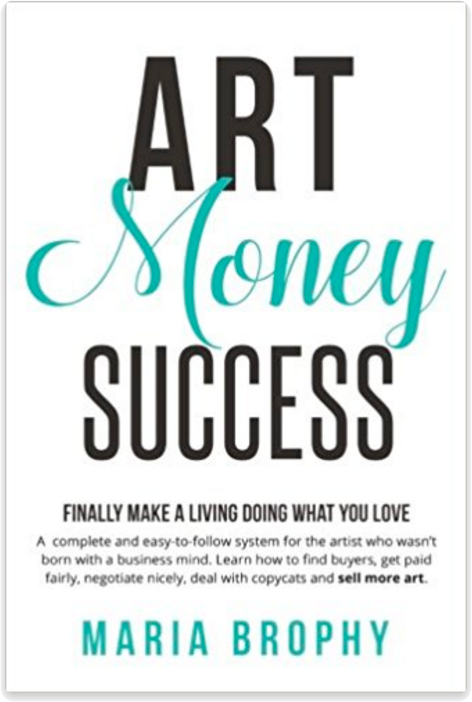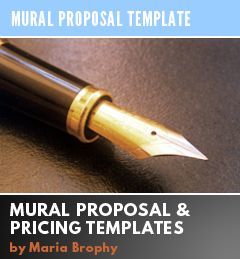Have you ever turned down a great opportunity because you were scared that you’d be taken advantage of? Or you were afraid that you would agree to something that you later would regret?
There’s a fun term that I read in WATERSHIP DOWN many years ago called “state of tharn” and it is used to reference that irrational “deer in the headlights” mentality that rabbits tend to go into when they are scared. When faced with a terrifying, life threatening (or perceived threat), the furry rabbits just stand there, frozen in time. They don’t move, even if it means they’ll be killed. The actual meaning of “tharn” is: stupefied, distraught, hypnotized with fear.
Humans go into a state of tharn also. But usually it’s more of a philosophical state of mind than a physical one. Such as when you fall into the trap of watching a really great deal pass you by like a slow moving train, all because you never returned the phone call to the person making you the offer. And the reason you didn’t call him back; because you were in a state of tharn. You didn’t know what to charge and you weren’t sure how to put the deal together.
You weren’t sure what you should do, so you did nothing. And so nothing happened. To you. Or for you.
Every great deal that’s ever gone down in history didn’t have a template to follow. It’s really just a matter of two parties of people getting together and working out an agreement that benefits everyone concerned. In all of the hundreds of deals I’ve made over the years, each one was different. Sure, many had similar features, but just like snowflakes, no two deals are ever alike.
When you are offered a great opportunity, but you aren’t sure what to charge, what to ask for, and what’s right and fair to agree to, consider these factors:
- Relax: Don’t wig out over the details like a teenage girl in love. Take your time and figure it out. Feel excitement and gratitude for what this new opportunity is bringing to you, and create a way to make it work.
- Determine exactly what your client is asking for: Sometimes people can be vague. You need specifics. How many, what color, deadline date, what do they expect from you, what are they offering to you in return, etc. Get information from them via e-mail so you can refer back to their written requirements when putting together your proposal. (Or take very good notes.)
- Ask a lot of questions: Often we are afraid to ask questions for fear of sounding stupid. It’s actually the opposite. It’s stupid not to ask. Throw out many questions, and then repeat what you thought you heard to confirm that you heard it. “Oh, you’d like for me to send you ten of my original paintings and you’ll show and sell them in three different galleries in France, is that right?” and “Who will be responsible to pay for the shipping both ways?” It’s crucial to know exactly what is expected of you and what they plan to be responsible for.
- Do your Research: Look online for information by others who may have been involved in a similar situation. Also, call and ask people you know if they’ve ever had experience with this sort of thing. Find out what the pros and cons are.
- When determining payment: If you aren’t sure what the going rate is, call others and ask them what they have charged for the same type of work. If you are active on Twitter, you’d be amazed at how helpful Twitterers are when asked a question.
- When Quoting a price: Don’t quote a price or even give a guess until you’ve done all your research, you have all details on the material, travel, attorney and other costs that may be involved. When you do give a price quote, place a time limit on it. I use 30 days from the date of the quote. That way they can’t come back a year later with the same quote when material prices have gone up, or my prices have increased.
- Don’t Let Fear Hold you Back: Often we let opportunities pass us by because we are afraid of the risk involved. Don’t be scared – make your decisions based on your logical research and move forward.
- Put it in Writing: This is important so that all parties involved know what they are agreeing to. It’s helpful to have something in writing to refer to later should there be confusion on what was promised.
- Use an Attorney: If it’s a rather large deal which involves large sums of money or contracts with companies that have their own legal department, you must hire an attorney to look over your agreement. Sorry, but it’s foolish not to.
- Remain Professional: Throughout the process, behave like a professional. Be upfront with your client, let them know where you’re at on this, and have open and frank discussions.
If, after all of your research and negotiations, you find that the deal isn’t worth it because it’s going to cost you more than you’ll get in return or it will ultimately be a time-waster for you, than politely back out of it.
But, if it’s something that you’ll enjoy, gain and grow from, than just go for it. Don’t let fear hold you back. The worst that can happen is not really that bad. Use your head, but don’t be scared to take on an exciting new opportunity.
Break out of that irrational “state of tharn” and jump in with both feet!
The greater the risk you take, the greater the rewards you’ll get.
Maria xxoo
PS: The Business of Art can be a roller coaster ride, but a most thrilling one! If there’s anything I can help you with, please email me or write your question in the comments. I’d love to help. Thanks for reading!











10 Responses
Maria:
Once again, this is a great post. And I wanted to be one of the first to comment, so here I am: to be supportive in your blogging efforts.
Correct me if I am wrong, but “the business of art” has a unique, nice-sounding ring to it. That’s what my gut tells me anyway: it has an almost musical (lyrical?) quality to it. Thanks for including that term.
I think it may have to do with the juxtaposition of art and business.
Maybe that’s because, in the popular imagination, not many people think of art as a business; nor do they feel, perhaps, that artists can also be good salespeople and achieve success in the market too.
And artists–many of them–toe that line because they are afraid of being perceived as people who are equally endowed with business acumen.
Maybe if they are wealthy and successful, some high-brow art critic may not take them as seriously? Can that fear hold them back from marketing the artwork? I wonder. Maybe the critic will make snide remarks in a piece written exclusively for a famous art journal?
Archan, I’m so lucky to always be able to count on you to read my posts! Thanks for your insightful comment, as always. The Business of Art – hmmm, does have a nice ring to it. Someone should make it into a song!
thank you maria for talking about tharn. being the geek that i am i often quote Muad’Dib from dune about fear being the mind killer. but i like the tharn example you gave.
i come from a commercial art/graphic design background and there is a completely different mind-set about business and creativity – it is all about revenue and you are expected to marry the business goals with your creative efforts. andy warhol also had this background and totally used his knowledge with his pop art movement.
i think what artists need are what sales people call an “objections” cheat sheet. if you ever looked at a request for proposal (RFP) from one company to another, the internal copy the sales person uses is lined with notes to counter objections to the deal. Example: “Well right now our budget only accounts for purchasing 1000 units of X…” Response “That’s fine, let’s sign you up for 1000 units and we’ll throw in a renewal for next quarter with a discount..” It’s all about being prepared for objections. which goes to your instruction about doing your research.
artists should embrace doing deals, all successful ones do. i think that “poor artist” myth is slowly disappearing as we see more and more contemporary art being recognized, mainly in media. where the real problem seems to be is the competitive atmosphere, undercutting, and it’s all rather chaotic. lol
This is a great article, Maria. I’m new to this blog, but enjoying it thoroughly so far! One of the things I believe is that in order to grow, we need to put ourselves in those situations where we feel uncomfortable. I’ve definitely had that feeling of “tharn” when faced with certain opportunities. It doesn’t matter if you feel afraid, what matters is that you do it anyways.
Contracts do put me in a state of thorn. I really like the way you put it “every deal is just a matter of two parties getting together and working out an agreement that benefits everyone concerned.” I have spent probably too much time trying to template the process.
Great solid advice Maria!
Maria, I’ve spent my evening reading your posts – wonderful advice for beginners in the art market, as well as great reminders for artists making a living at their art. Thanks, and HUGS! 🙂
The problem that many artists impose upon themselves when first starting out is that they don’t treat their art WORK as a business. They get excited…”oooh, so-and-so wants me to do a painting for them”…but they don’t ask the “lots of questions” you talk about or do the research required to pull off the job properly, and more importantly, profitably. Then the tharn sets in…akkk, what’s my next step???
After a few minor issues with clients many years ago, I learned what works for me, and I now have a permanent work-flow list taped to my studio wall of steps to follow when an art inquiry comes in. I do not deviate from it, and that has saved my butt more than once. 🙂
Also, acting professionally with clients goes a long way towards how artists and their work are perceived, and as my old boss had taped on her door, “DWYSYWD”. (Do What You Said You Would Do)
Maria , thank you for all youre insight wisdom and encouragment that is contained in youre blogs. Youve chosen all the right words , brought up all the right points and have breaken it up into a science for me. much appreciated!!!
thanks again
Dear Maria,
I just wanted to say your articles are brilliant. They are totally informative, inspiring and enlightening.
I looked up your article on mural painting, having been given a Brief for one, and found it very useful before engaging on something which I think was inadequately budgeted by the client.
Many thanks
Regards
Saranjit Birdi
Hi Maria,
Thank you very much for this great post! Very helpful.
I love what you do for your husband’s work and for all us artists out here.
I am a graphic designer/art director from the island of Curaçao, who always had a passion for drawing and painting. Only recently (since 2009) I’ve been taking my skill as a painter more seriously. Every year I am getting more and more commission work, but since every job is different, it is challenge when it comes to how much i should charge.
To give you an example; I’ve been asked to do paintings in a club that will be opening in two months. They want everything from stylish text on a two story tall wall to an 8ft tall portrait mural to a couple of Trompe L’oeil paintings in the ladies bathroom ceiling. I’ve done all of those paintings before, but never in the same building and let alone in an environment like a club. So, I was kind of stuck in a “state of tharn” when it came to pricing this. One of the owners called me yesterday told me not to stress too much on the price and to remind me that I will get a lot of exposure from their club.
I’ve heard that story more than once before, but I like to believe that it is a two way street. That the same way this club might help my exposure, the same way my art will be helping with their club’s success.
Because we live on such a small island the market is very small I have to always keep in mind not to put my prices too high because people here are kind of used to less quality art for a low price or are just not used to paying for high quality art.
I send my quote last night and so far I haven’t heard from them yet.
I’ll keep my fingers crossed but will manage my expectations and keep on painting!.
Kind regards,
Garrick Marchena
Garrick,
Couple thoughts I want to share with you:
First: Often when I send a price quote I don’t hear back for a couple days. Usually they are busy, or need to talk to their partner, or looking for other quotes. So, give it a little time. If you don’t hear back in 3 days, email asking if there are any other questions you can answer for them.
2nd: Promotional value is great, when you’re getting paid properly. We just painted a 61′ x 16′ wall mural in downtown Myrtle Beach and got paid well for it – AND it was written about in the newspaper, 2 magazines and was on TV 3 times! The owner of the business really benefited from that, as her business name was mentioned over and over again.
If you are offered a chance on tv, that’s promotional value. But still charge for your work!
3rd: Pricing: Take your time on pricing – gather ALL info, sizes, dimensions, what you’ll have to rent (scaffolding etc), what the client wants, etc. Then write it all out, give great thought to how much time it will take and what the materials will cost. Give a price that earns you enough to where you feel good – then give the customer something he’s glad he paid for.
And, always, 100% of the time, get 50% of the payment up front before buying your materials or getting started!